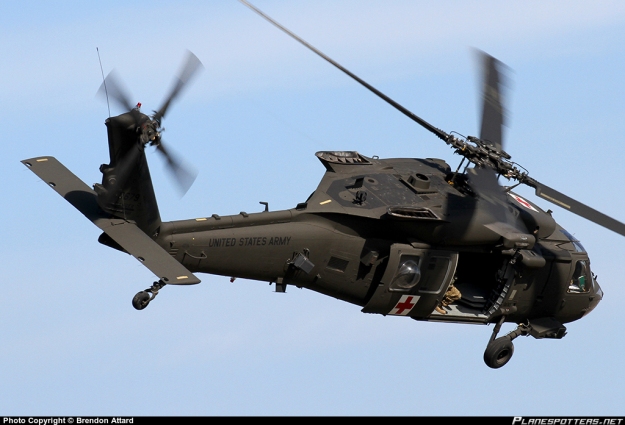Flight Ready: Ensuring Optimum Condition for Your UH 60 Helicopter
Flight Ready: Ensuring Optimum Condition for Your UH 60 Helicopter
Blog Article
Recognizing the Mechanics and Engineering Behind Uh 60 Helicopters
The UH-60 helicopter, typically understood as the Black Hawk, stands as a peak of contemporary rotorcraft innovation, personifying a blend of robust engineering and complex auto mechanics. As we peel off back the layers of the UH-60's style, a world of complex systems and careful design comes to light.
History of UH-60 Helicopters
The history of UH-60 helicopters traces back to the late 1970s when the United States Army looked for a functional and sophisticated energy helicopter to change its aging fleet. In reaction to this need, the Sikorsky Airplane Company established the UH-60 Black Hawk helicopter. Introduced in 1979, the UH-60 swiftly became a staple in armed forces procedures due to its outstanding capabilities.
The UH-60 was designed to succeed in a selection of objectives, consisting of troop transportation, clinical discharge, digital war, and special procedures. Its capability to adapt to various duties made it a beneficial possession to the U.S. uh 60. Military and other army pressures around the globe
Over the years, the UH-60 system has undertaken a number of upgrades and variants to improve its performance and equal evolving objective requirements. These helicopters have actually seen comprehensive solution in disputes such as the Gulf War, Afghanistan, and Iraq, showcasing their reliability and flexibility in diverse functional environments. The UH-60's abundant history is a testimony to its enduring tradition as a top utility helicopter.

Engine and Power Systems
Utilizing cutting-edge propulsion technology, UH-60 helicopters are equipped with advanced engine and power systems to ensure optimal efficiency and dependability in a variety of operational scenarios. The UH-60, typically known as the Black Hawk, is powered by 2 General Electric T700-GE-701D engines, each qualified of providing up to 1,940 shaft horsepower. These turboshaft engines provide the necessary drive for the helicopter to bring out its objectives efficiently, consisting of army transportation, medical discharge, and fight support.

Rotor System and Aerodynamics
How do the blades system and the rules of aerodynamics of UH-60 helicopters add to their operational efficiency and trip capacities? The blades system of the UH-60 helicopter plays a crucial duty in supplying lift and propulsion.
Aerodynamics also play a key role in the efficiency of UH-60 helicopters. The streamlined fuselage and blades blade style decrease drag, allowing the helicopter to achieve greater speeds and better gas effectiveness. The aerodynamic design of the UH-60 additionally adds to its ability to run in varied environmental conditions, consisting of high altitudes and warm temperature levels.
Avionics and Flight Control Equipment

In its intricate sychronisation with the rotor system and aerodynamics of UH-60 helicopters, the avionics and flight control systems create an essential network of innovations forming the aircraft's functional capabilities. In the UH-60, these systems include electronic screens, communication radios, GPS navigation, weather radar, and autopilot systems.
The trip control systems of the UH-60 are accountable for converting the pilot's inputs into the appropriate modifications to the blades system, making certain stable flight and maneuverability. These systems include hydraulic actuators, servos, and computers that work with each other to manage the tail and main rotors, in addition to various other trip control surface areas. By exactly taking care of the helicopter's trip dynamics, these systems allow pilots to do a large range of goals, from transportation and search-and-rescue to you could try here deal with operations, with precision and confidence.
Role and Applications in Aviation
The role and applications of avionics and trip control systems in air travel are indispensable to ensuring the safe and effective operation of aircraft, including UH-60 helicopters. Avionics systems in UH-60 helicopters encompass a range of digital systems that help in navigation, interaction, surveillance, and regulating different aircraft functions. These systems consist of digital displays, autopilot systems, interaction radios, general practitioner navigation equipment, and climate radar. Flight control systems play a critical function in navigating the helicopter in the air, keeping stability, and making sure exact motions. The fly-by-wire technology made use of in contemporary UH-60 helicopters translates pilot inputs right into electronic signals, which are then analyzed by the flight control computer systems to change the aircraft's control surface areas. In addition, these systems integrate safety attributes such as autopilot settings, terrain recognition cautioning systems, and stability enhancement systems to enhance the general security and functional abilities of the UH-60 helicopters in different goals, consisting of troop transportation, medical discharge, search and rescue, and aerial firefighting.
Verdict
In conclusion, the UH-60 helicopter is a flexible airplane with a rich history and progressed design. Its engine and power systems, blades system, aerodynamics, avionics, and flight control systems all function together to make it a efficient and reputable equipment. The UH-60's duty and applications in aviation are large, varying from armed forces procedures to look and save goals. Its continued development click to investigate and use show its relevance in the area of aeronautics (uh 60).
In its detailed control with the blades system and the rules of aerodynamics of UH-60 helicopters, the avionics and flight control systems develop a vital network of modern technologies forming the airplane's operational abilities.The trip control systems of the UH-60 are liable for converting the pilot's inputs right into the proper modifications to the rotor system, ensuring secure trip and ability to move. Avionics systems in UH-60 helicopters incorporate a variety of electronic systems that aid in navigating, interaction, tracking, and managing various airplane features. Additionally, these systems incorporate safety and security attributes such as auto-pilot modes, surface understanding cautioning systems, try these out and security enhancement systems to improve the general safety and functional capabilities of the UH-60 helicopters in numerous objectives, including troop transportation, medical discharge, search and rescue, and aerial firefighting.
Its engine and power systems, blades system, the rules of aerodynamics, avionics, and flight control systems all function together to make it a effective and reliable equipment.
Report this page